Week 2 of National Safe Work Month takes a deep dive into understanding psychosocial hazards at work and how to manage the risks.
What are psychosocial hazards?
A psychosocial hazard is anything that could cause psychological harm (e.g. harm to someone's mental health) however they can also cause physical harm. Psychosocial hazards are created by:
- the design or management of work
- a work environment
- plant at the workplace, or
- workplace interactions or behaviours.
The impacts of psychosocial hazards
In total, serious claims for mental health conditions in 2021-22 resulted in 584,029 working weeks of time lost from work.
On average, work-related psychological injuries have longer recovery times, higher costs, and require more time away from work.
This week we will look at:
- identifying psychosocial hazards
- common myths
- controlling the risks and the importance of consultation, and
- managing psychosocial hazards in practice.
Learn more
- model Code of Practice: Managing psychosocial hazards at work
- model Code of Practice: Sexual and gender-based harassment
- the People at Work tool
This October we will focus on a different health and safety area for each week of National Safe Work Month.
Stay updated
To keep updated about National Safe Work Month, follow us on social media and subscribe to our mailing list. When subscribing, be sure to check ‘National Safe Work Month’.
Subscribe | Facebook | LinkedIn | Instagram | YouTube | #SafeWorkMonth #SafetyIsOurBusiness

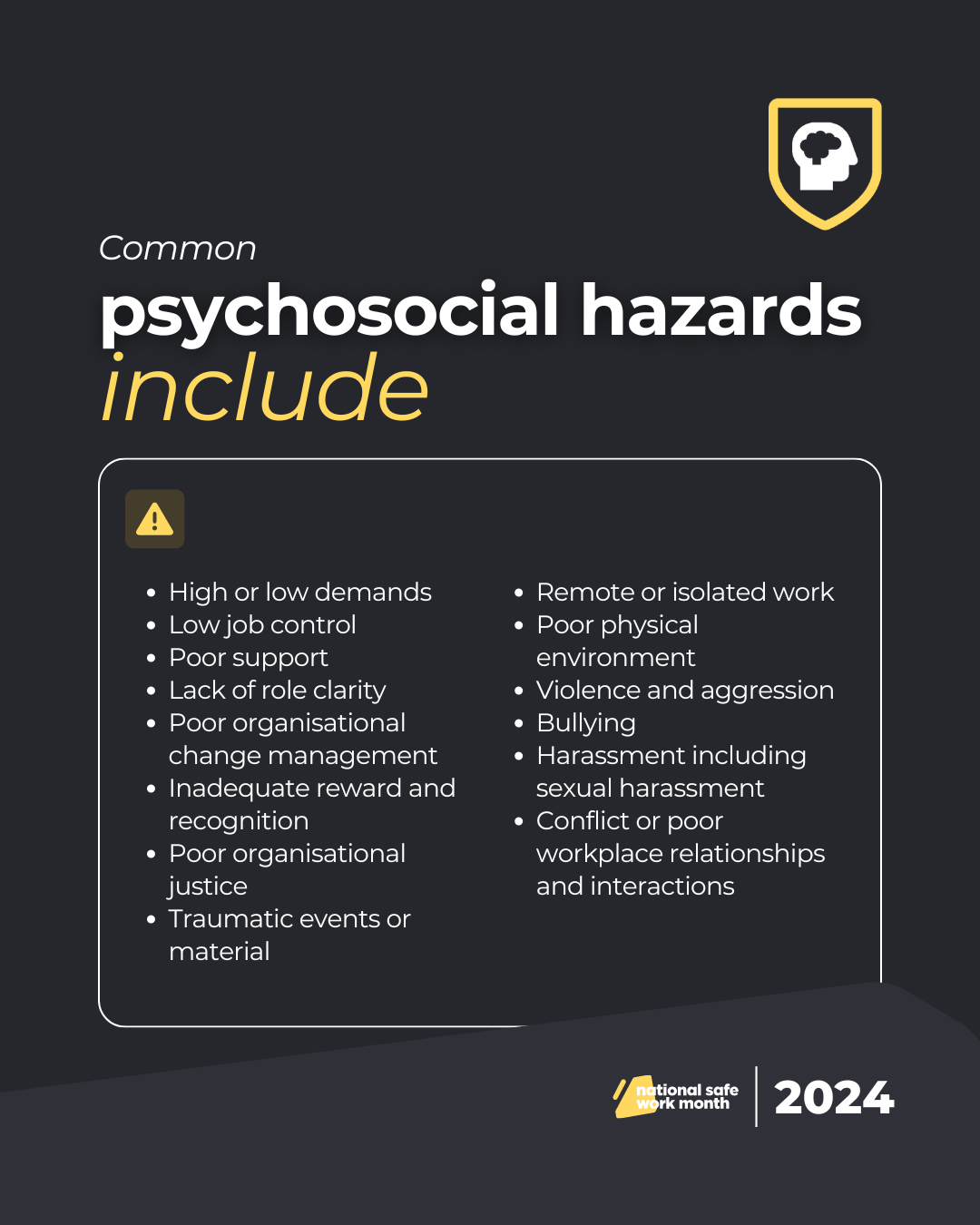
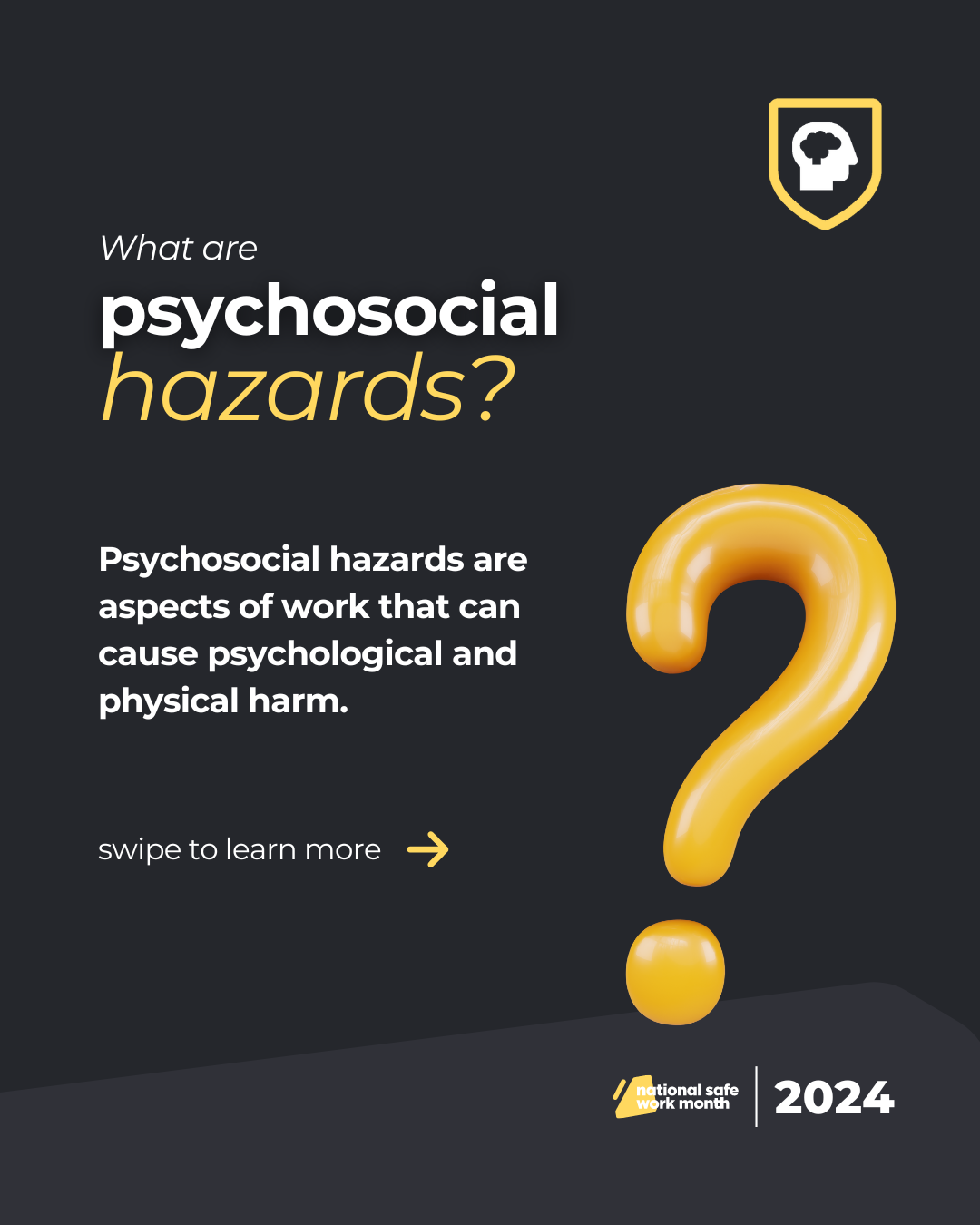
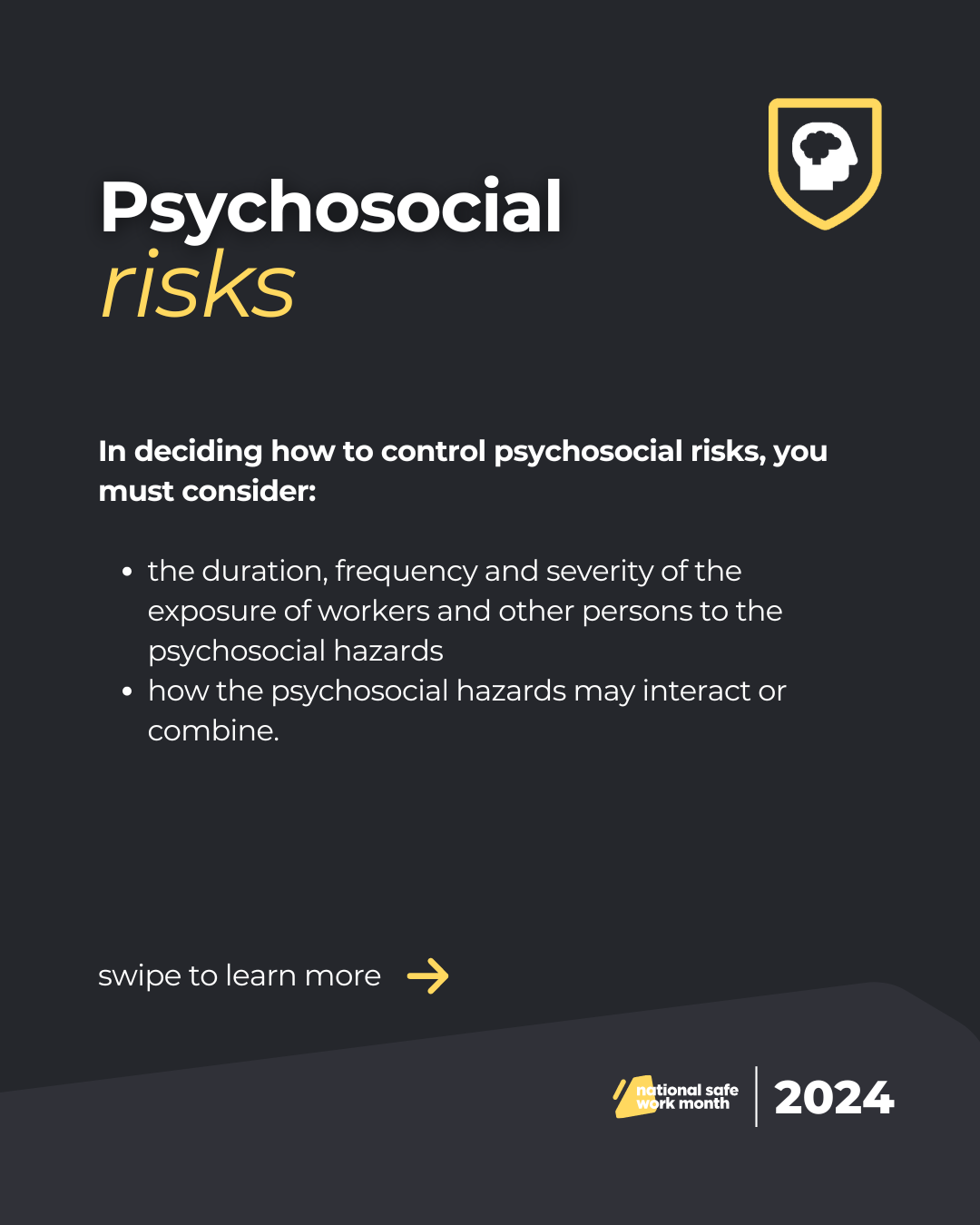
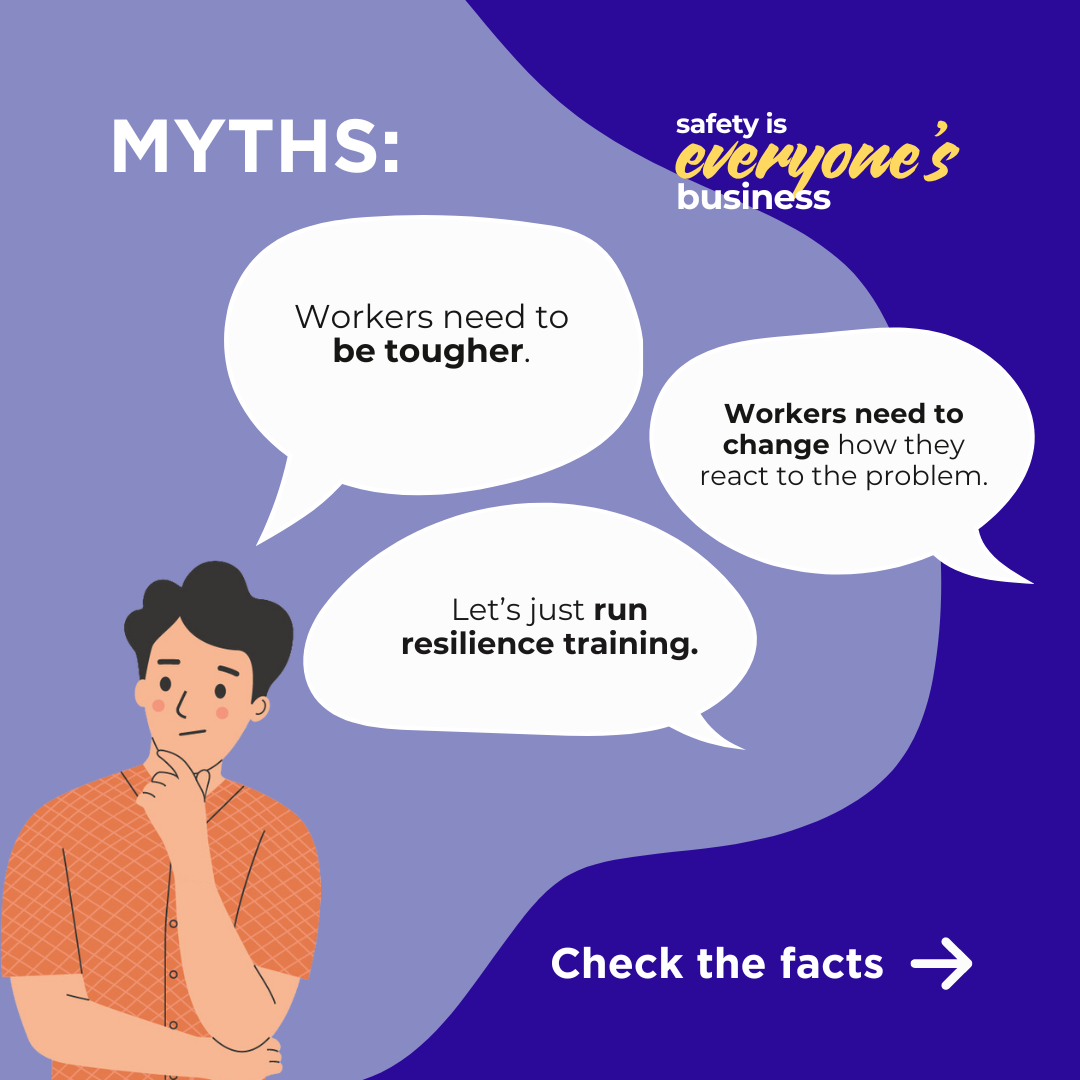
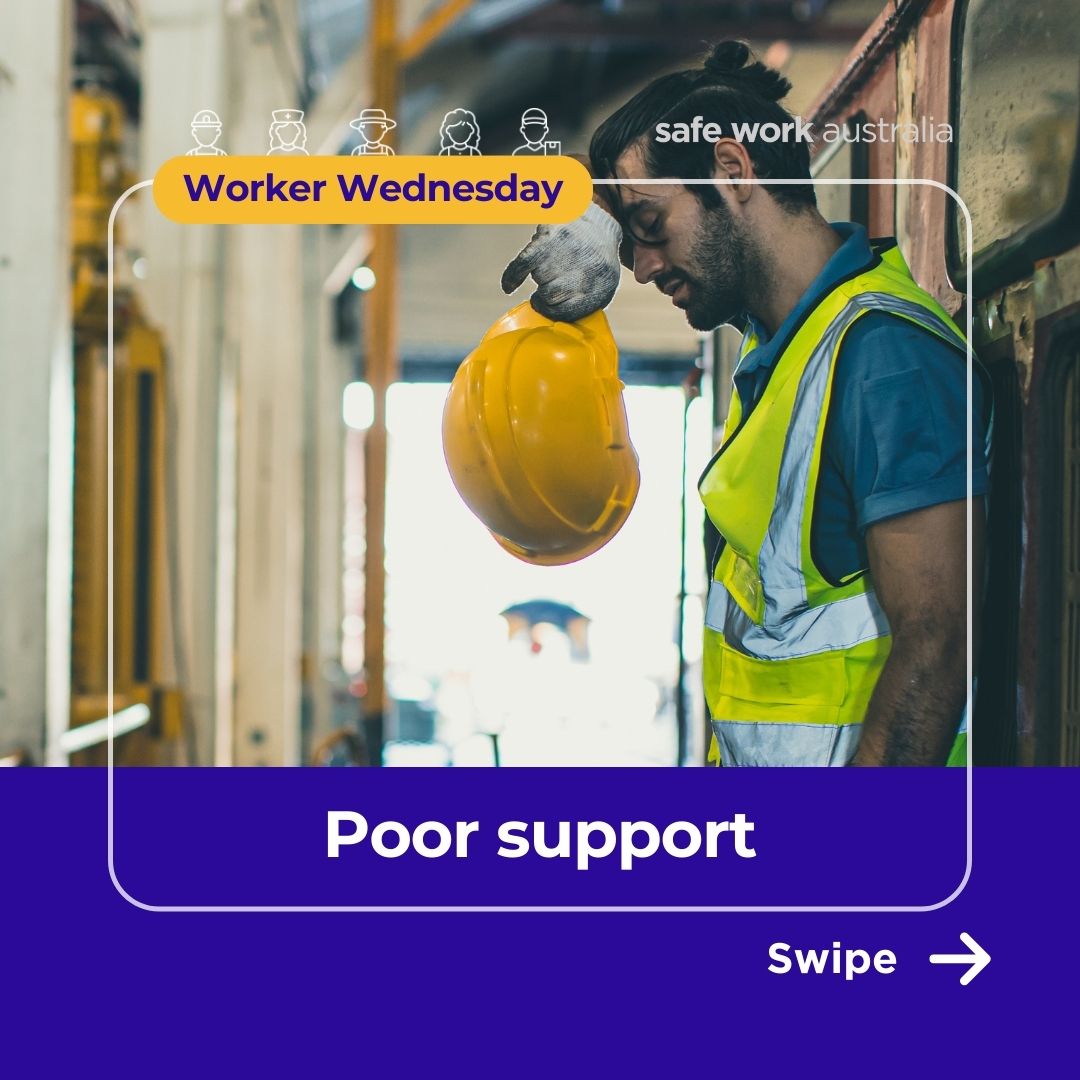
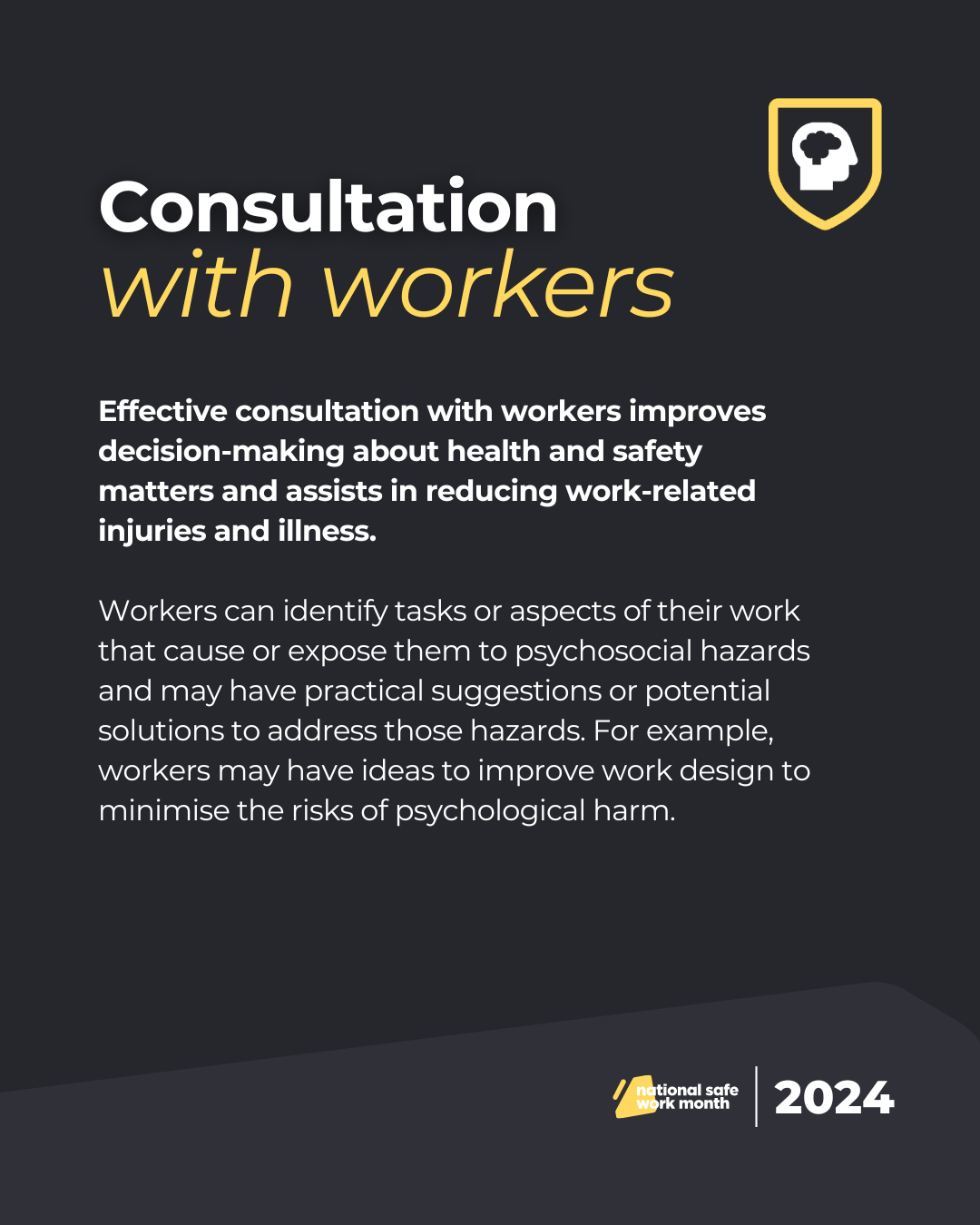



Week 3 (14-20 October)
Risk management fundamentals
Risk management is integral to a safe and healthy workplace. This week learn how to undertake a WHS risk assessment, including how to identify hazards in the workplace.